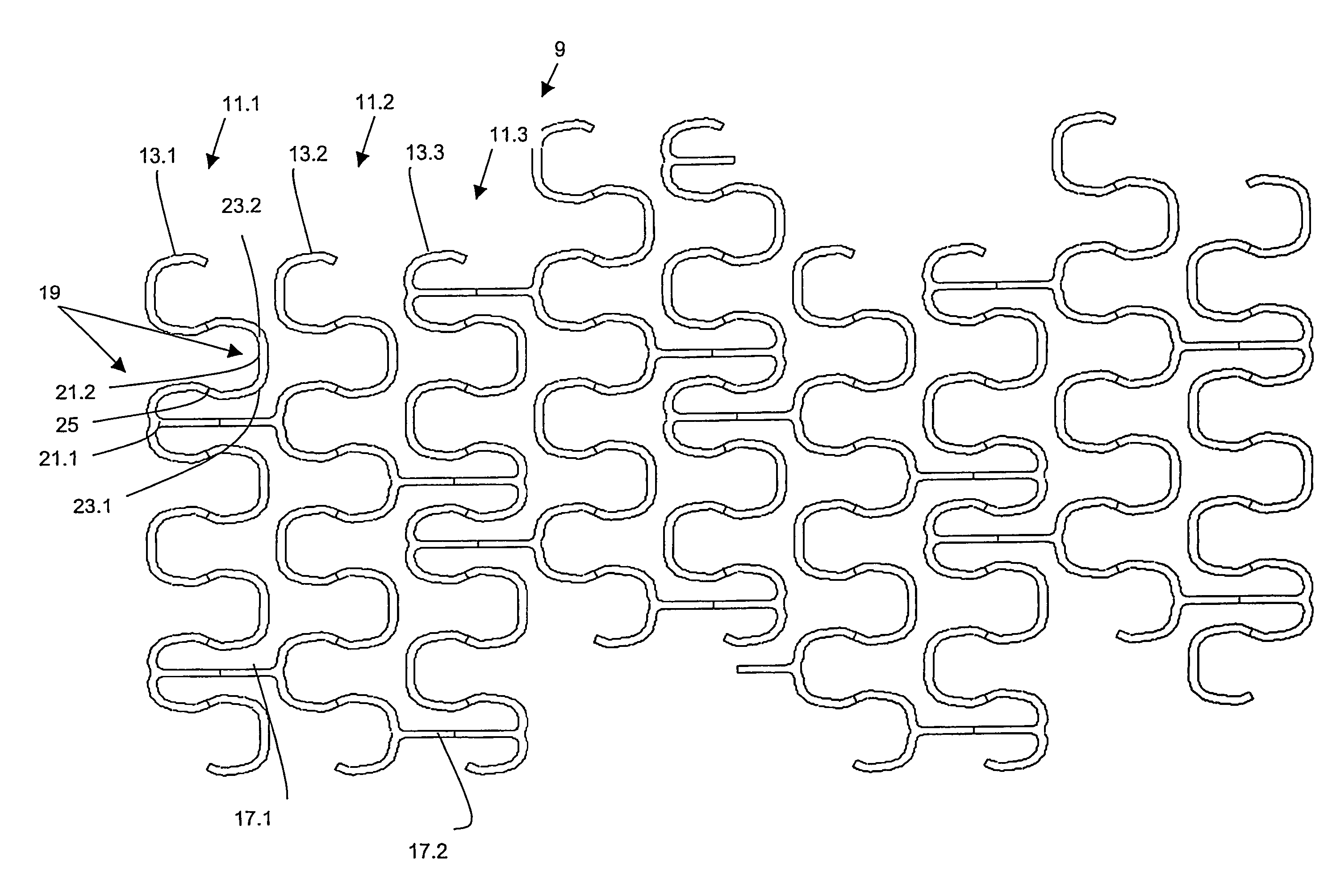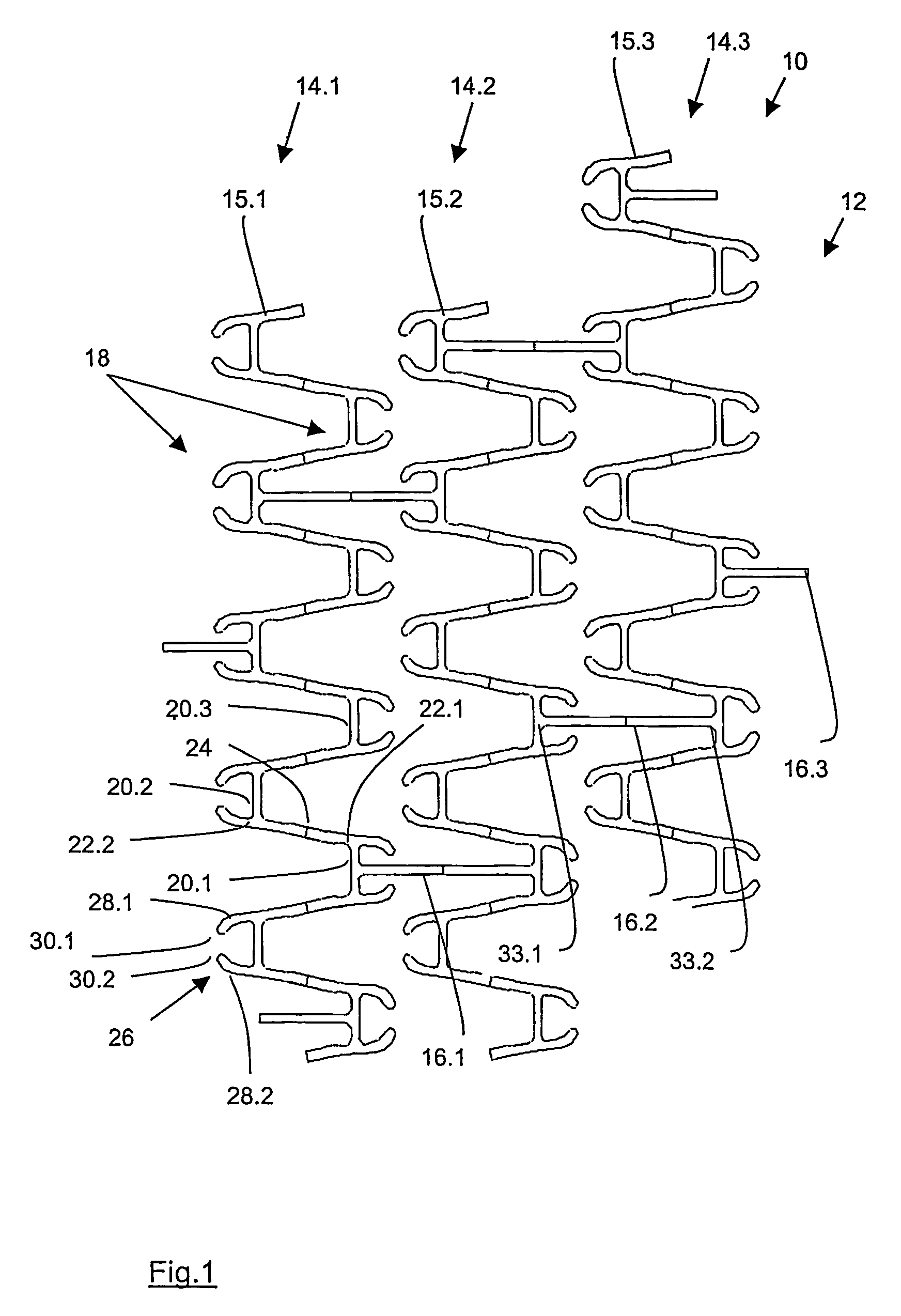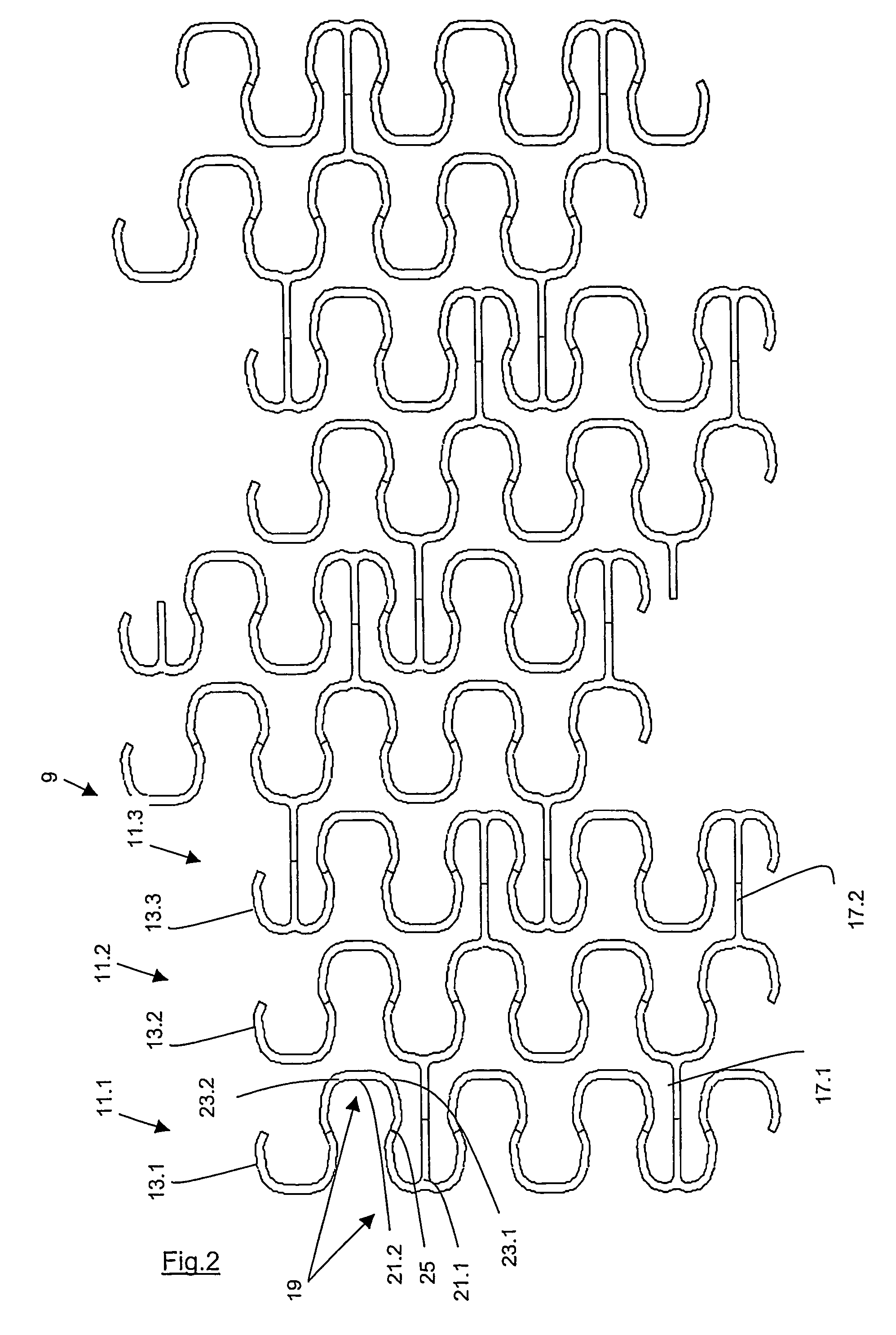Stents made of a material with short elongation at rupture
a technology of elongation and stents, applied in the field of stents, can solve the problems of significantly more force required to open, significantly shorten the length of the lever arm of the loop, and so low the strength of the material, so as to improve the expansion behaviour and enhance the bending flexibility
- Summary
- Abstract
- Description
- Claims
- Application Information
AI Technical Summary
Benefits of technology
Problems solved by technology
Method used
Image
Examples
embodiment 1
[0040]FIG. 1 diagrammatically shows a section view of a stent 10, namely in a top view of the windings of its tubular circumferential wall 12. A base body of the stent 10 is composed entirely or in part of a multitude of structural segments 14.1, 14.2, 14.3. The individual structural segments 14.1, 14.2, 14.3 are interconnected by way of transverse connectors 16.1, 16.2, 16.3 aligned in longitudinal direction of the stent 10. The design of the transverse connectors 16.1, 16.2, 16.3 is shown only by way of an example.
[0041]In order to enhance the bending flexibility, variants with S-, V-,W -or some other multisinusoidal shape can also be used.
[0042]The structural segments 14.1, 14.2 and 14.3 of FIG. 1 comprise a zigzagging or undulating structure made from a brace 15.1, 15.2, 15.3 that extends circumferentially along the longitudinal axis of the stent 10. As shown in the illustration, in a turning region 18 of the zigzagging or undulating structure, i.e. in the peaks of the individua...
embodiment 2
[0045]FIG. 2 diagrammatically shows a section view of a further stent 9 with a multitude of structural segments 11.1, 11.2, 11.3 arranged side by side. The structural segments 11.1, 11.2, 11.3 have a loop structure comprising a brace 13.1, 13.2, 13.3 which circumferentially extends along the longitudinal axis of the stent 9. By way of transverse connectors 17.1, 17.2 the individual structural segments 11.1, 11.2, 11.3 are interconnected in longitudinal extension of the stent 9. The illustration is a top view of the windings of the circumferential wall formed by the individual support segments 11.1, 11.2, 11.3.
[0046]As far as the design options and joining options of the transverse connectors 17.1, 17.2 are concerned, reference is made to the shapes mentioned in embodiment 1.
[0047]In the turning region 19 of the loop structure, i.e. at the tips of the individual loops, the braces 13.1, 13.2. 13.3 comprise straight bending sections 21.1, 21.2, aligned in circumferential direction. The...
embodiment 3
[0048]FIGS. 3a to 3c provide a three-dimensional view in enlarged sections of a stent 9.1 with a design that is almost identical to that of embodiment 2. The only difference is that in embodiment 3 transverse connectors 17.3, 17.4 now start at each turning region 19.1. The three-dimensional representation of FIG. 3a shows the stent design in the non-expanded state. As can be seen from the enlarged section of FIG. 3b, the two bending sections 21.3, 21.4 in the turning region 19.1 are not aligned exactly in circumferential direction of the stent 9.1, but instead deviate slightly, namely by approximately 8°. FIG. 3c shows an enlarged view of the turning region 19.1 with the two bending sections 21.3, 21.4 and in addition, by means of the dashed line, indicates the deformation of this region during expansion of the stent 9.1.
PUM
| Property | Measurement | Unit |
|---|---|---|
| elongation | aaaaa | aaaaa |
| elongation | aaaaa | aaaaa |
| elongation | aaaaa | aaaaa |
Abstract
Description
Claims
Application Information
 Login to View More
Login to View More - R&D
- Intellectual Property
- Life Sciences
- Materials
- Tech Scout
- Unparalleled Data Quality
- Higher Quality Content
- 60% Fewer Hallucinations
Browse by: Latest US Patents, China's latest patents, Technical Efficacy Thesaurus, Application Domain, Technology Topic, Popular Technical Reports.
© 2025 PatSnap. All rights reserved.Legal|Privacy policy|Modern Slavery Act Transparency Statement|Sitemap|About US| Contact US: help@patsnap.com



